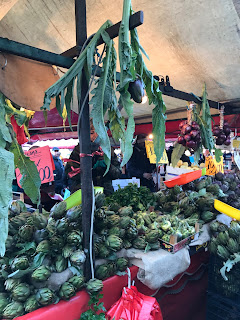A year goes by pretty quickly. It's already been a year since I last traveled to Guatemala to facilitate a service learning program (with students). Today I am looking back at
what I wrote last year, preparing for this journey.
 |
| Got my hands on some tools to help custom-build a wheelchair for this little guy |
Last year, I posed three questions, which I will attempt to answer here.
1. How can we foster sustainable relationships with community partners in the towns we will visit?
Next week will make three times that Speech-Language Pathology has taken a team of students to Guatemala to promote literacy enrichment. In conjunction with the
local mission that coordinates our week, we have been able to establish a relationship with a
school for children with special needs, and are nurturing a relationship with an
after-school program that also solicits sponsorships for individual children in their program to cover school and healthcare expenses. Continuing to return to these places, and keeping in touch with them during the year, helps build and maintain the relationships. Of course, challenges are always the short time we are actually in Guatemala (one week), and the uncertainty in planning all the details of our days there.
 |
| SHU students engaging with Brillo de Sol students |
2. How can we find out, from the communities themselves, how we can participate with them? What do they really want from this collaboration?
This is a tough one. There seems to be an endless amount of needs in the towns we visit. It concerns me that the people in these communities are used to seeing groups of gringos coming in to provide them with goods or services. Last October, we traveled without the team of SHU nursing students who usually provide over-the-counter drugs and vitamins in the temporary clinics we set up. Many Guatemalans came to the community center looking for medicine that we could not offer.
I think this is why it's critical to have relationships with the leaders of local organizations in the communities we are attempting to serve. We can't meet all the individual needs of those who come looking for help, but we can try to implement some sort of systematic support to those who are there, working full-time, on a permanent basis to improve their situations.
 |
| Book donation to Ahava Ministries' after-school program. Thank you, Lectorum and Scholastic Books! |
3. What are the long-term impacts of global service learning on the participating students? How will this experience influence their academic and professional inquiries and applications at home? What is my role as a facilitator in supporting/enhancing the students' learning?
Lots of questions here! I am confident from reading returning students' reflections -including a follow-up reflection from a few SLP students who did the program twice- that there is a definite, positive impact for the students. For many, there is intercultural development. For some, there is transformative learning. Perceptive students can clearly see and are able to articulate how what they learn from this experience will transfer to their life and work in the US (e.g., in working with culturally diverse communities).
My role as a facilitator has been a bit different this year, as we provided a structured, cultural awareness curriculum for the students before leaving. Over the last few weeks, the students have been reflecting on who they are, delving into dimensions of their own culture, and learning about Guatemalan history and culture, in preparation for our experience. Hopefully, this will increase intercultural development outcomes. We will see. At any rate, this year, I am going to try to be both a coach and an observer of my students. I want to support them, but I also want to let them figure things out on their own, and watch them do it. I am looking forward to this process.
 |
| A reflective student writes in her journal during lunch break |
I have to say that I head back to Guatemala excited, but with the same concerns as always. Maybe rather than wondering what our team can do in just one week, I should see us as just one element of a much bigger picture. We are only a piece of the giant puzzle composed of all the various gringo groups and "helpers" who show up and want to do good in this place. Our intentions are good. We will do our best to contribute.
 |
| Evening sky in La Antigua, Guatemala |








































